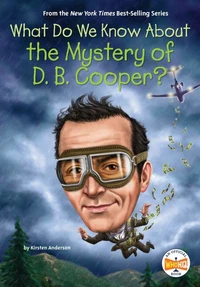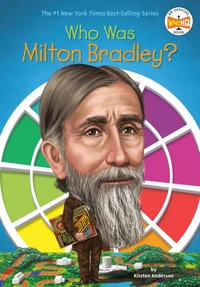What Was the Great Molasses Flood of 1919?
Par : ,Formats :
Disponible dans votre compte client Decitre ou Furet du Nord dès validation de votre commande. Le format ePub protégé est :
- Compatible avec une lecture sur My Vivlio (smartphone, tablette, ordinateur)
- Compatible avec une lecture sur liseuses Vivlio
- Pour les liseuses autres que Vivlio, vous devez utiliser le logiciel Adobe Digital Edition. Non compatible avec la lecture sur les liseuses Kindle, Remarkable et Sony
- Non compatible avec un achat hors France métropolitaine
 , qui est-ce ?
, qui est-ce ?Notre partenaire de plateforme de lecture numérique où vous retrouverez l'ensemble de vos ebooks gratuitement
Pour en savoir plus sur nos ebooks, consultez notre aide en ligne ici
- Nombre de pages112
- FormatePub
- ISBN978-0-593-52079-6
- EAN9780593520796
- Date de parution09/04/2024
- Protection num.Adobe DRM
- Taille77 Mo
- Infos supplémentairesepub
- ÉditeurPenguin Workshop
Résumé
The unbelievable true story of one of the strangest disasters in history-part of the New York Times bestselling What Was? series, featuring 16 pages of photos. On an unusually warm winter day in Boston, Massachusetts, a storage tank in the city's North End burst, flooding the neighborhood with 2.3 million gallons of molasses. The Red Cross, the Army, the Navy, and the Massachusetts Nautical School all launched courageous rescue missions to save people from the sticky and deadly mess, and it took hundreds of volunteers several weeks to clean up the streets.
Ultimately, the disaster killed twenty-one people and injured 150 others. But the tragedy inspired reform that made our cities safer for all.
Ultimately, the disaster killed twenty-one people and injured 150 others. But the tragedy inspired reform that made our cities safer for all.
The unbelievable true story of one of the strangest disasters in history-part of the New York Times bestselling What Was? series, featuring 16 pages of photos. On an unusually warm winter day in Boston, Massachusetts, a storage tank in the city's North End burst, flooding the neighborhood with 2.3 million gallons of molasses. The Red Cross, the Army, the Navy, and the Massachusetts Nautical School all launched courageous rescue missions to save people from the sticky and deadly mess, and it took hundreds of volunteers several weeks to clean up the streets.
Ultimately, the disaster killed twenty-one people and injured 150 others. But the tragedy inspired reform that made our cities safer for all.
Ultimately, the disaster killed twenty-one people and injured 150 others. But the tragedy inspired reform that made our cities safer for all.






















